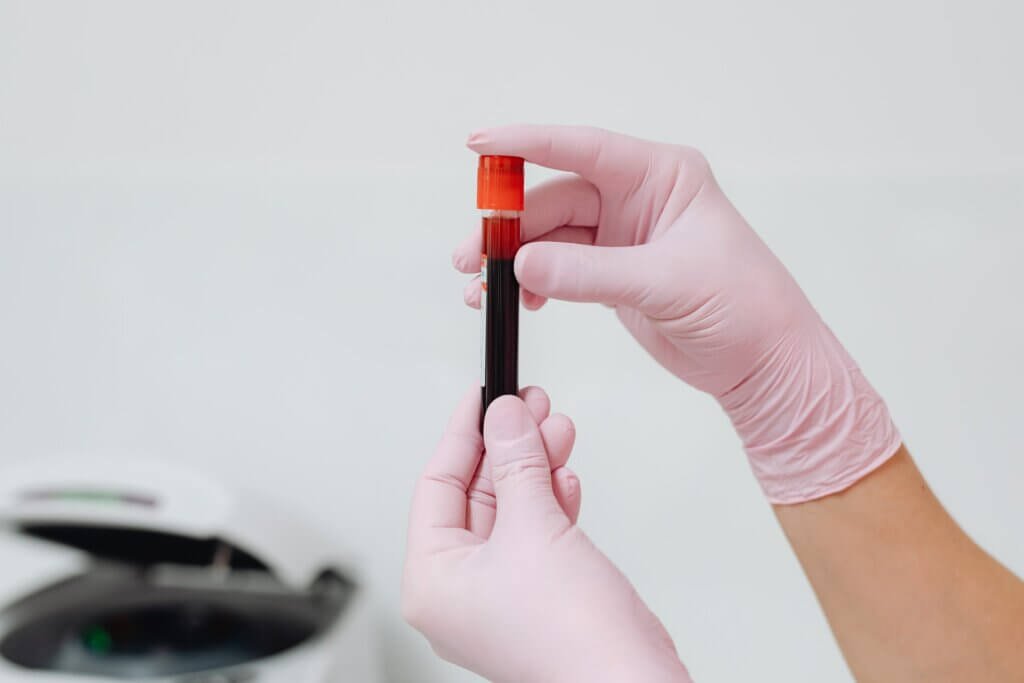Blood
$3 blood test capable of early detection for several cancers
NEW YORK — Cancer often lurks silently, showing no symptoms until it reaches an advanced, difficult-to-treat stage. Ovarian and gastroesophageal cancers, in particular, are notorious for their elusive progression, frequently leading to late-stage diagnoses. To combat this, an international team of researchers has developed a highly sensitive blood test that holds promise for early cancer detection.
The test can identify a key protein produced by cancer cells and is capable of detecting multiple types of the disease.
Unlike many existing cancer tests that may have limitations, high costs, or require invasive tissue sampling, this innovative method is an affordable, multi-cancer detector. It can identify the presence of a specific protein called LINE-1 ORF1p in a small amount of blood in under two hours.
“The assay has groundbreaking potential as an early diagnostic test for lethal cancers,” says Michael P. Rout, head of The Rockefeller University lab, in a university release. “These kinds of ultrasensitive detection instruments are poised to improve patient outcomes in transformative ways.”
Understanding the Key Protein
Cancer biomarker detection is a relatively new and rapidly evolving field. Biomarkers are specific molecules that indicate the presence of cancer in the body. However, many existing biomarkers have their drawbacks. Some require surgical biopsies, while others are only detectable after symptoms appear, often too late for effective treatment. Additionally, many biomarkers vary from person to person, making interpretation challenging. Most are also specific to particular types of cancer.
A potential breakthrough came with the discovery of the protein LINE-1 ORF1p about a decade ago. LINE-1 is a retrotransposon, a virus-like element present in every human cell, which replicates using a copy-and-paste mechanism, resulting in genetic changes. ORF1p is a protein produced at high levels in cancer cells.
“Transposons are normally expressed in sperm and egg and during embryogenesis, so there are some circumstances where you have nonpathobiological expression of transposons,” says study co-author John LaCava, a Rockefeller research associate professor who specializes in LINE-1 research. “But otherwise, these ‘jumping genes’ are silenced within the genome, because their activity creates stress and insults in the cell.”
(Photo by Karolina Grabowska from Pexels)
The Ultrasensitive Assay
Collaborating with researchers from Mass General Brigham, the Wyss Institute for Biologically Inspired Engineering at Harvard University, and Dana-Farber Cancer Institute, among others, the Rockefeller team developed a low-cost assay to detect ORF1p in blood plasma, which makes up more than half of human blood content.
The assay relies on a single-molecule-based detection technology called Simoa, developed by co-author David Walt at Harvard. Custom nanobodies, derived and engineered from llamas, were employed to capture and detect the ORF1p protein accurately.
“We were shocked by how well this test worked across cancer types,” says study lead author Martin Taylor, of the Department of Pathology at Massachusetts General Hospital.
The test, costing less than $3 to produce, provides quick results.
Potential for Early Detection and Monitoring
Beyond early detection, this assay offers the potential for monitoring a patient’s response to cancer therapy. If treatment is effective, the ORF1p level in the patient’s blood should decrease.
“During a healthy time in your life, you could have your ORF1p levels measured to establish a baseline,” explains LaCava. “Then your doctor would just keep an eye out for any spikes in ORF1p levels, which could be indicative of a change in your state of health. While there might be some minor ORF1p fluctuations here and there, a spike would be a cause for a deeper investigation.”
The study underscores the significant potential of nanobody reagents derived from the study of interactomics, a field focused on understanding the dynamic interactions of the components within cells, particularly proteins and nucleic acids. These interactions play a crucial role in diseases, including cancer.
“There’s an essential need for much better tools to reveal and dissect interactomes that’s only beginning to be met,” notes Rout. “To that end, we often collaborate with other institutions on the development of reagents such as our llama-derived nanobodies. The resulting products are not mere research tools—they have enormous potential in the hands of doctors.”
The study is published in the journal Cancer Discovery.
You might also be interested in:



